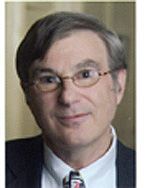The Formation of the Jewish Cannon by Timothy H. Lim, Yale University Press, New Haven; ISBN 978-0-300-16434-3 ©2013, $45.00, p. 287, including appendices and index
By Fred Reiss, Ed.D.

WINCHESTER, California — How many books are there in the Bible? If you came up with a number, you might be wrong. The correct answer to the question is a question: Which Bible? The Protestant Old Testament has 39 books, the Roman Catholic’s holds 49 books; the Orthodox Christian’s has a whopping 60 books. The Hebrew Bible is fixed at only 24 books because the Books of Samuel I and II, Kings I and II, and Chronicles I and II are counted as three books and not six. Additionally, Ezra and Nehemiah are counted as one book, as are the twelve Minor Prophets. These 24 books are divided into three categories: Torah, the Five Books of Moses; Neveim, the eight books of the prophets; and Ketuvim, the writings, eleven books, which cover everything from Psalms to Chronicles.
The history of the canonizations of the Christian bibles is well documented, but not so for the Hebrew Bible. There are two schools of the thought on the subject of the Jewish canon. The first argues that an authoritative canon became fixed in progressive stages, perhaps starting as early as the return of the Jews from the Babylonian Captivity with Ezra and Nehemiah. The other side argues that an authoritative canon developed haphazardly and slowly over a long period of time, finally becoming fixed during the Mishnaic Period, 10 – 220 CE.
Timothy H. Lim, Professor of Hebrew Bible and Second Temple Judaism at the School of Divinity, University of Edinburgh, in his latest book The Formation of the Jewish Canon seeks the answers to the questions of how the Jewish cannon became definitive and when did it close in its present form. He accomplishes this by reexamining a number of ancient sources, including: letters from early church theologians, selected writings of Philo and Josephus, the biblical Book of Ezra, and the apocryphal books of 4 Ezra and 2 Maccabee, the Letter of Aristeas and The Wisdom of Ben Sira, portions of the Dead Sea Scrolls, and the synoptic Gospels.
Lin reviews and discredits the “Three-Stage Theory,” which posts a linear closing of the canon in its present-day order of Torah, about 400 BCE; then the prophets, about 200 BCE; and finally the writings in about 100 CE. The proponents of the “Three-Stage theory” argue first, that the Samaritan Schism, in which the Samaritans altered portions of the traditional Five Books of Moses, shows that these books were already fixed in a closed canon. Second, they assert that book of 2 Maccabees, which tells the story of Judah Maccabee collecting books lost in the war for a library, suggests that the books of the prophets were already fixed. Third, they claim that the books of the writings were made permanent at a meeting of rabbis, the Council of Yavne, in 90 CE.
Through a detailed and scholarly analysis Lin concludes that the Jewish canon evolved over a long period of time and with the exception of the Pentateuch, in no particular order. His research finds that no official canon existed from the return of the Jews from the Babylonian Captivity, about 538 BCE, until about 100 CE. Rather, several competing unsanctioned canons existed side-by-side. These included the Pharisaic canon of twenty-two to twenty-four books; the Samaritans, who accepted only the revised Five Books of Moses; the Sadducees who might not have recognized any canon at all; and the Essenes whose concept of a canon included their own sectarian writings
In The Formation of the Jewish Canon, Lin informs us that early in their return from Babylonia, the Jewish community slowly developed a consensus that the Five Books of Moses are holy and of divine origin. But, it took hundreds of years for the people to informally sort out which other books were as equally holy and authoritative, and how they should be arranged. Thus, when the rabbis in the Mishnah, a set of books that record the official rulings on how the Jewish people should live, enumerated and categorized the books of the prophets and writings in Tractate Bava Batra, they were not imposing a canon on the Jewish people, but rather acknowledging and sanctioning what the community had developed over several centuries.
The evolution of the Jewish canon is complex and circuitous. The Formation of the Jewish Canon is an excellent example of scholarship, which brings to light this convoluted history.
*
Dr. Fred Reiss is a retired public and Hebrew school teacher and administrator. He is the author of The Standard Guide to the Jewish and Civil Calendars; Ancient Secrets of Creation: Sepher Yetzira, the Book that Started Kabbalah, Revealed; and a fiction book, Reclaiming the Messiah. The author can be reached via fred.reiss@sdjewishworld.com.